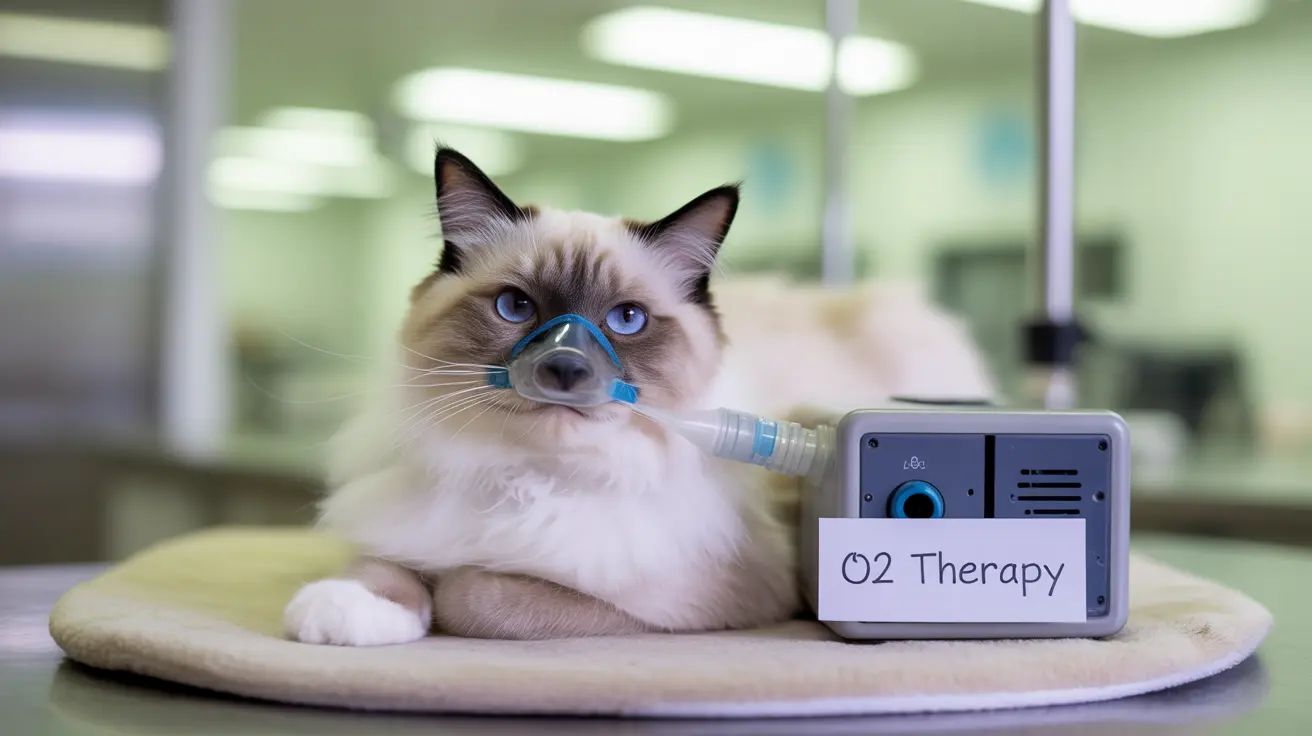What is the Thorax in Cats?
The thorax, or chest cavity, is a crucial part of your cat's anatomy that houses vital organs including the heart and lungs. When problems develop in this area, they can quickly become life-threatening emergencies requiring immediate veterinary attention. One of the most serious conditions affecting the thorax is hemothorax - the accumulation of blood within the chest cavity.
Common Causes of Thoracic Problems
Several factors can lead to issues within a cat's thorax, with trauma being the most common cause. This includes injuries from car accidents, falls from heights, or fights with other animals. Other potential causes include:
- Blood clotting disorders
- Chest tumors
- Surgical complications
- Infectious diseases
- Parasitic infections
Recognizing the Warning Signs
Early detection of thoracic problems can save your cat's life. Watch for these critical symptoms:
- Rapid, shallow breathing
- Labored breathing or panting
- Bluish tinge to gums or tongue
- Weakness or lethargy
- Collapse or inability to stand
- Distended chest appearance
Diagnostic Procedures
When a cat presents with thoracic issues, veterinarians employ several diagnostic tools:
- Thoracentesis (chest fluid sampling)
- Chest X-rays
- Ultrasound examination
- Blood work
- CT scans when necessary
Emergency Treatment Options
Treatment for thoracic conditions varies based on the underlying cause but often includes:
- Immediate oxygen therapy
- Drainage of accumulated fluid
- Blood transfusions if necessary
- Intravenous fluid therapy
- Pain management
- Surgical intervention when required
Prevention and Long-term Care
While not all thoracic problems can be prevented, certain measures can reduce risks:
- Keeping cats indoors
- Regular veterinary check-ups
- Preventing access to toxic substances
- Maintaining a safe home environment
- Prompt attention to any breathing changes
Frequently Asked Questions
What are the common causes of hemothorax in cats and how can I prevent it?
Hemothorax most commonly results from trauma, blood clotting disorders, or chest tumors. Prevention includes keeping cats indoors, securing windows and balconies, and regular veterinary check-ups.
What signs and symptoms should I watch for if my cat has blood in its chest (hemothorax)?
Key symptoms include rapid or labored breathing, weakness, pale or bluish gums, lethargy, and collapse. Any breathing difficulties should be treated as an emergency.
How is hemothorax diagnosed and what tests will my vet perform on my cat?
Diagnosis typically involves chest X-rays, thoracentesis (fluid sampling), blood tests, and possibly ultrasound or CT scans. These tests help determine the cause and extent of bleeding.
What emergency treatments are available for a cat diagnosed with hemothorax?
Emergency treatments include oxygen therapy, fluid drainage from the chest, blood transfusions, and supportive care. Surgery may be necessary depending on the underlying cause.
What is the prognosis for cats with hemothorax and can they fully recover?
The prognosis depends on the cause and how quickly treatment begins. Cats with trauma-induced hemothorax often recover well with prompt treatment, while those with underlying conditions like tumors may have a more guarded prognosis.
Conclusion
Understanding thoracic issues in cats and recognizing their symptoms can make the difference between life and death. If you notice any breathing difficulties or chest-related symptoms in your cat, seek immediate veterinary care. With prompt treatment and appropriate follow-up care, many cats can recover successfully from thoracic conditions.






